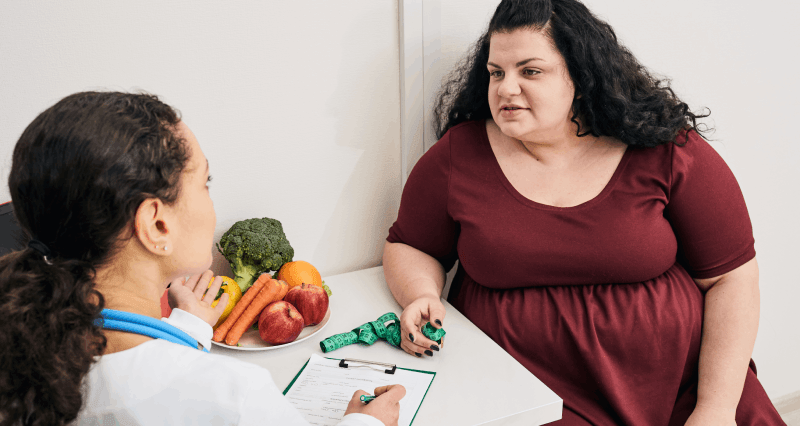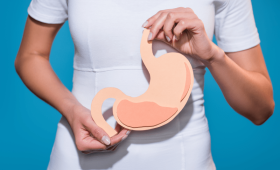Losing weight often seems like a complex process, but at its core, it’s based on a simple principle: consuming fewer calories than your body burns. One of the most effective and sustainable ways to create this calorie deficit is through portion control. Portion control doesn’t mean starving yourself or giving up your favorite foods; rather, it’s about getting properly satiated and taking in the right amount of energy your body needs. This content will explain why portion control is so vital and how you can easily apply it in your daily life, in 10 simple steps.
1. What is Portion Control and Why is it of Vital Importance?
Portion control is the conscious act of managing the amount of food and drink you consume at each meal. Oftentimes, we have a tendency to finish everything on our plate or consume the massive portions at restaurants without even thinking. This behavior, even with healthy foods, leads to an unconscious excessive calorie intake and consequently, weight gain. Portion control not only limits calorie intake but also soothes the digestive system, helps balance blood sugar, and makes your relationship with food healthier.
2. Visual Cues: Determining Portions with Your Hands
A food scale or measuring cups may not always be at hand. For this reason, it’s very useful to rely on practical and easily applicable visual cues, especially when eating out.
- Palm of Hand: The size of your palm is generally equivalent to one serving of meat, chicken, or fish (approximately 85-115 grams).
- Fist: The size of your fist is ideal for a portion of carbohydrates (rice, pasta) or fruit.
- Thumb: The tip of your thumb is a good measure for one serving of fat (butter, olive oil).
- Two Hands: Two handfuls are a great reference for a portion of leafy greens or raw vegetables.
These simple methods help you visualize food and manage your portions more mindfully.
3. Using Portion-Friendly Plates and Bowls
The size of the plate you serve your food on has a surprising effect on the amount you eat. Research shows that people who use large plates tend to eat more than those who use smaller plates. Our brain perceives a full plate as satisfying. Therefore, to make portion control easier, try putting your meals on smaller plates, bowls, and in smaller glasses. This simple change helps you feel full earlier psychologically.
4. Meal Planning and Preparation (Meal Prep)
Planning ahead is one of the most important steps in portion control. By planning your weekly meals and dividing them into portions, you don’t have to decide what to eat during the day.
- Portioning Containers: Portioning containers are great tools for preparing your meals in advance and setting the right amounts. With these containers, you can easily carry your healthy snacks or lunch with you.
- Frozen Portions: Freezing leftover food in single-serving containers ensures that you always have a healthy option on hand for emergencies.
5. Eating Slowly and Mindful Eating
The pace of modern life causes us to consume our meals in a hurry. However, it takes approximately 20 minutes for the “I’m full” signal to reach the brain. Therefore, eating slowly and savoring every bite allows you to feel full with less food. Mindful eating practices involve focusing on your meal, increasing the number of times you chew, and listening to your body’s satiety signals.
6. Portion Control at Restaurants
Eating out can make portion control difficult. However, you can overcome this problem with a few simple strategies.
- Split it: Ask to have half of your meal packaged to eat later. This way, you take in fewer calories and have a ready meal for your next meal.
- Focus on Starters: The main course portions at restaurants are often very large. Instead, you can order two or three starters to try different tastes and avoid the excessive calories of the main course portion.
- Ask Questions: By asking the waiter about the size of the portion or the ingredients before ordering, you can make a more conscious choice.
7. Make a Habit of Reading Labels
Nutritional labels on packaged foods provide vital information about serving sizes and calorie counts. We often forget that a single package contains more than one serving. For example, a bag of chips might contain 2 or 3 servings. By reading the labels, you can better understand the total calories and fat in a package and determine how much you should eat.
8. Listen to Your Body: Hunger and Fullness Signals
Listening to your body’s natural signals is one of the most important steps in portion control. Real hunger is accompanied by your stomach growling or a slight feeling of emptiness. Emotional hunger, on the other hand, usually results from emotions such as boredom, stress, or fatigue. When you start eating, stop when you feel 80% full. Don’t force yourself to finish everything on your plate.
9. Consume Enough Protein and Fiber
Protein and fiber are two important macronutrients that aid in portion control.
- Protein: Protein digests more slowly than other macronutrients and keeps you feeling full for a longer time. This prevents unnecessary snacking.
- Fiber: High-fiber foods (vegetables, fruits, whole grains) are voluminous and slow down the digestive system, increasing the feeling of fullness.
Adding protein and fiber to each meal will help you feel satiated even if you reduce your portions.
10. Increase Water Intake
Sometimes what we think is hunger might actually be thirst. Drinking plenty of water before and during meals helps you feel full sooner by taking up space in your stomach. Also, drinking water speeds up your metabolism and is vital for your overall health. Aim to drink 8-10 glasses of water a day.
Losing weight doesn’t happen with a magic formula, but with small and sustainable habits. Portion control is the most fundamental of these habits and, when applied, ensures you achieve lasting results.



